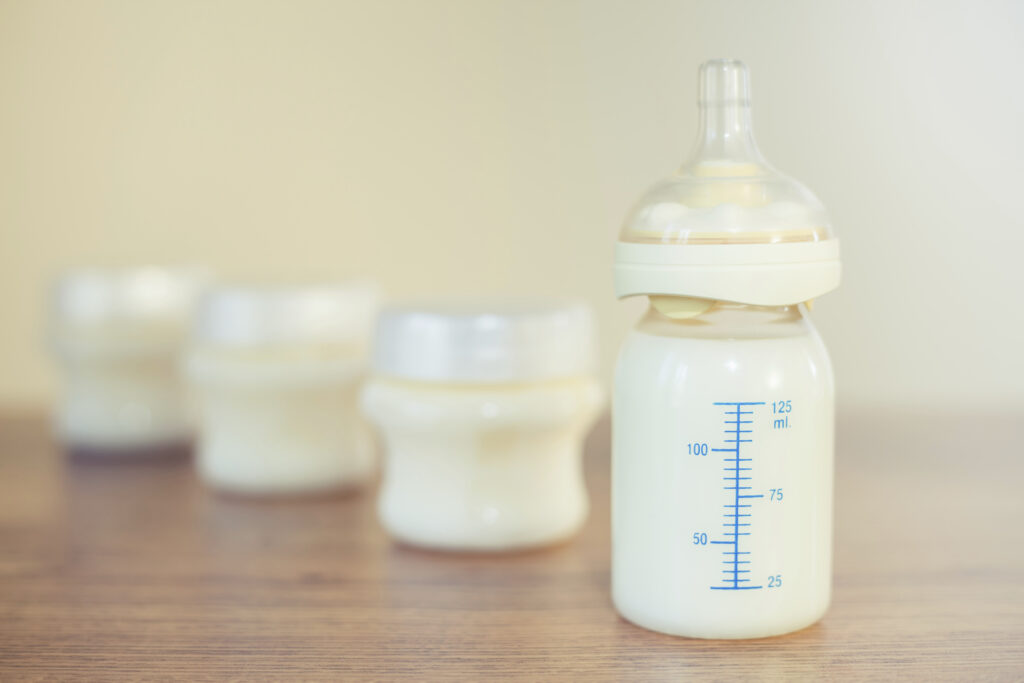The evolution of formula milk represents a pivotal shift in infant nutrition, driven by cutting-edge technologies that have redefined what’s possible. From synthetic milk production to cellular agriculture, technology is transforming formula milk to closely mimic the nutritional profile of human breast milk.
The Advent of Synthetic Milk
Precision Fermentation and Baby Nutrition
Precision fermentation is a groundbreaking technology shaping the future of infant nutrition. HiPP Formula Milk is harnessing this innovation to enhance its product offerings, ensuring babies receive the highest quality nutrition akin to that found in natural cow milk.
HiPP’s Adaptation of Precision Fermentation
HiPP Formula Milk is leveraging precision fermentation to produce proteins that are identical to those found in cow milk. This technology starts with yeast and through fermentation, creates the creamy texture and nutritional components that are important for infant growth and development.
Impact on Formula Milk Market
The introduction of synthetic milk is poised to disrupt the market significantly. As this technology matures, it promises to offer a sustainable, animal-free alternative that can supply the market with key dairy proteins without relying on traditional dairy farming. This has profound implications for baby nutrition, offering a new pathway to access the essential nutrients babies need for healthy development.
Cellular Agriculture in Infant Formula

Source: cbsnews.com
Engineering Milk Bioactives
Cellular agriculture technology, utilizing microorganisms and cell cultures, is another transformative force. It can produce milk bioactives such as sugars, lipids, and proteins tailored for infant nutrition. This scientific advancement is instrumental in ensuring that formula milk can provide a complex composition of nutrients that more closely resembles those found in human breast milk.
The Race to Reproduce Breast Milk
Companies like Biomilq, backed by prominent investors, are vying to replicate breast milk through biotechnological methods. This endeavor is not just about creating a substitute but about providing a product that can support the intricate developmental needs of infants, similar to the way natural breast milk does.
Innovations in Milk Fractionation Technology
Advanced Protein Separation
Arla Foods Ingredients has pioneered a new fractionation process, designed to separate milk into distinct protein components. This advancement is particularly significant for infant formula, as it allows for the creation of products that are more finely tuned to the specific nutritional requirements of babies.
Nutritional Mimicry Through Technology

Source: which.co.uk
Balancing Proteins for Optimal Growth
The precision in balancing the protein content in formula milk is critical for infant development. HiPP understands this and uses technology to adjust the protein ratio in their formula to closely mimic breastmilk, which is essential during the first year of a baby’s life.
Allergen Management with Advanced Formulations
For infants at risk of allergies, HiPP’s hypoallergenic (HA) formula is a testament to technological advancements in baby nutrition. This formula utilizes hydrolyzed proteins, which are easier for babies to digest, thereby minimizing allergic reactions.
Conclusion
The integration of these technological advancements into the production of formula milk is not just about innovation for its own sake. It reflects a deeper commitment to enhancing infant health and nutrition, ensuring that all babies have the best start in life, regardless of their circumstances.



